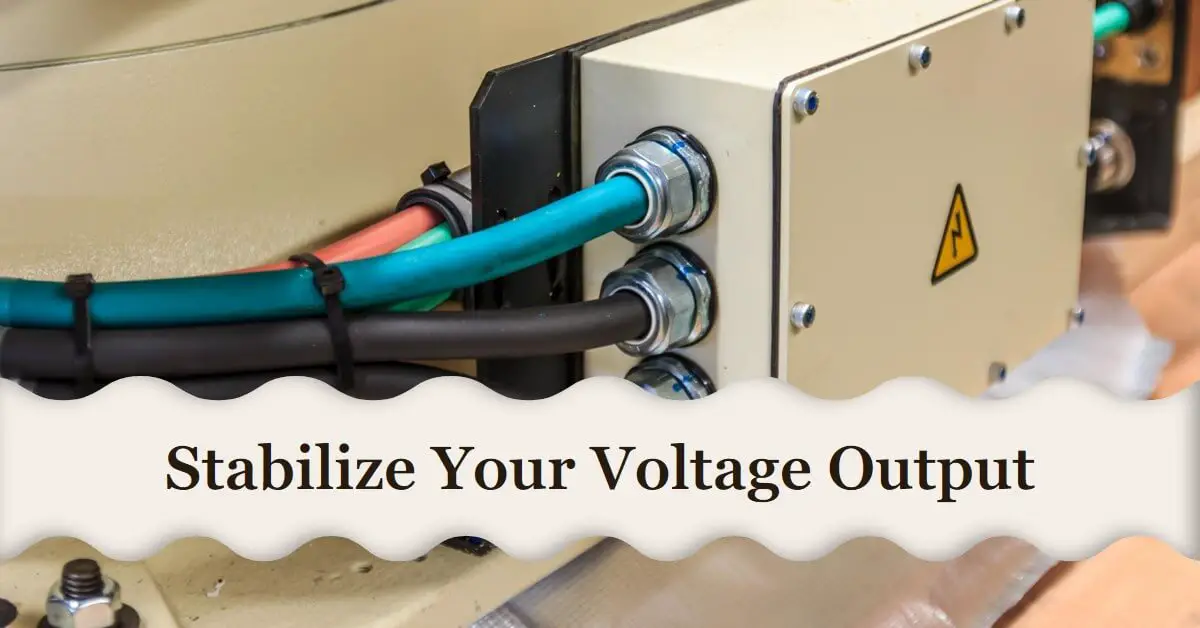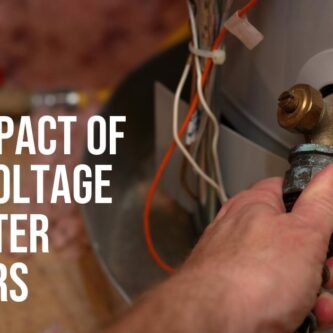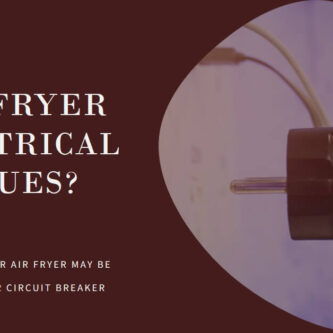Image: “Article Feature Image” by Bing is licensed under CC BY-NC-SA 4.0. Source: Bing Graphic Art. License: CC BY-NC-SA 4.0.
Voltage stabilizers play a crucial role in ensuring a stable and reliable power supply. However, one common observation is that the output voltage of stabilizers is often lower than the input voltage.
This article aims to explain the reasons behind this phenomenon and shed light on the factors influencing stabilizer output voltage.
Understanding Stabilizers
Stabilizers are devices designed to regulate and maintain a steady voltage level despite fluctuations in the input voltage.
There are various types of stabilizers, including voltage stabilizers, automatic voltage regulators (AVR), and uninterruptible power supplies (UPS).
Each type serves a specific purpose but operates based on the same principle of voltage regulation.
Factors Affecting Stabilizer Output Voltage
Several factors contribute to the output voltage of a stabilizer being lower than the input voltage:
- Input Voltage Fluctuations: Stabilizers are primarily designed to handle voltage fluctuations and provide a stable output. When the input voltage exceeds the desired output level, the stabilizer reduces it to maintain a steady output voltage.
- Load Variations: Changes in the load connected to the stabilizer can affect the output voltage. If the load increases, the stabilizer compensates by reducing the output voltage to maintain stability.
- Design Limitations: Stabilizers are designed with specific operating limits. In some cases, the design may prioritize other factors such as size, cost, or efficiency over maintaining an exact output voltage equal to the input. This can result in a slightly lower output voltage.
- Efficiency Losses: The process of voltage regulation involves converting and regulating power, which inevitably leads to some energy losses. These losses, often in the form of heat dissipation, can cause a slight reduction in the output voltage.
Working Principle of Stabilizers
Stabilizers utilize feedback control systems to regulate voltage. They compare the output voltage with a reference voltage and adjust the input voltage accordingly.
This feedback loop ensures that any variations are quickly detected and corrected, maintaining a stable output voltage.
Understanding Voltage Regulation
Voltage regulation is achieved by detecting the difference between the desired output voltage and the actual output voltage.
Compensation techniques, such as relay-based or transformer-based voltage regulation, are employed to correct this difference and ensure a steady output voltage.
Voltage Drop in Stabilizers
Voltage drop refers to the reduction in voltage that occurs within the stabilizer. It can be attributed to various factors, including internal resistance and inductive reactance. These factors, inherent to the stabilizer’s design, contribute to the lower output voltage.
Efficiency Considerations
Stabilizers experience power losses during the voltage regulation process. These losses are primarily due to energy conversion and other inherent inefficiencies.
Assessing the conversion efficiency, considering factors such as input power, output power, and power factor, helps understand the overall efficiency of a stabilizer.
Advantages and Disadvantages
Stabilizers offer several advantages, including protection against voltage fluctuations and ensuring stable power supply to connected devices.
However, some limitations exist, such as the slightly lower output voltage compared to the input and the associated efficiency losses.
Applications and Use Cases
Stabilizers find applications in both residential and commercial settings. They are essential in environments where a constant and reliable power supply is critical, such as industrial and manufacturing facilities.
Future Developments and Improvements
Technological advancements continue to drive improvements in stabilizer design. Ongoing research focuses on enhancing efficiency, and performance, and minimizing voltage drop to further improve the output voltage regulation capabilities.
Conclusion
While it is a common observation that stabilizer output voltage is less than the input, this phenomenon is a result of various factors such as voltage fluctuations, load variations, design limitations, and efficiency losses.
Understanding these factors helps us appreciate the importance of stabilizers in maintaining a stable power supply and mitigating the impact of voltage fluctuations on connected devices.
you work With Electricity! Don’t leave empty-handed!
Looking to stay ahead of the game in the world of electrical engineering? Subscribe to my YouTube channel and gain access to exclusive content you won’t find anywhere else!
The staff I recommend (Amazon Affiliate Links to products I believe are high quality):
- Economy 120 Volt/60Hz AC Power Source – Step-Down Voltage & Frequency Converters 1800W
- UNI-T Digital Multimeter Tester UT139C
- 50-Amp Extension Cord for RV “100ft”
- Voltage Stabilizer 110/220v
- Hair Dryer “best selling“
- TOSHIBA EM131A5C-BS Countertop Microwave Ovens
Disclaimer: This contains affiliate links to Amazon products. I may earn a commission for purchases made through these links.





